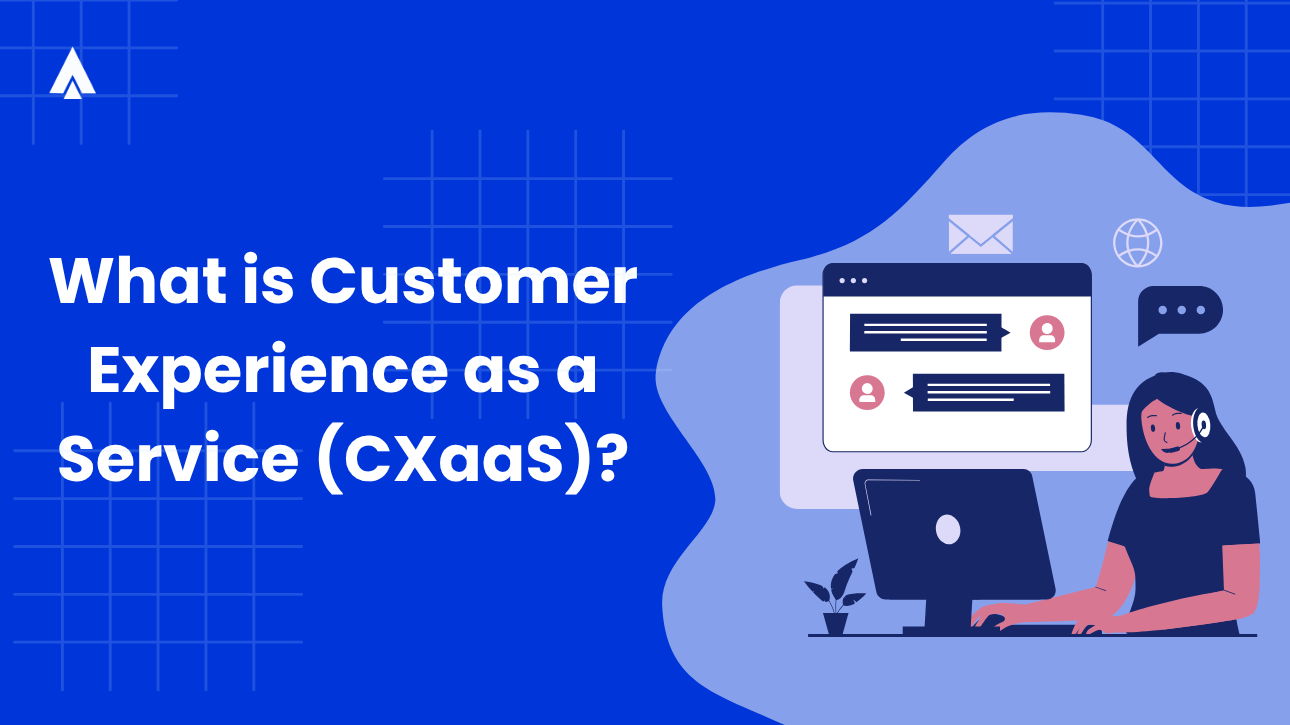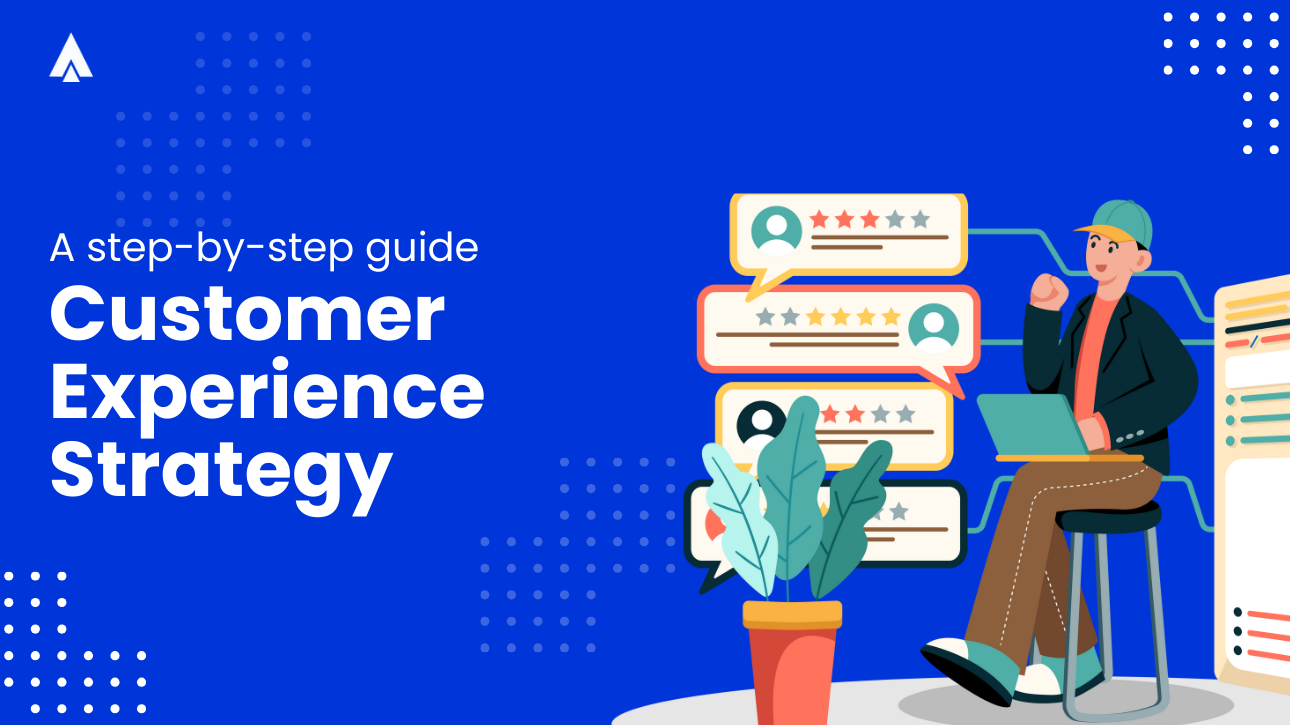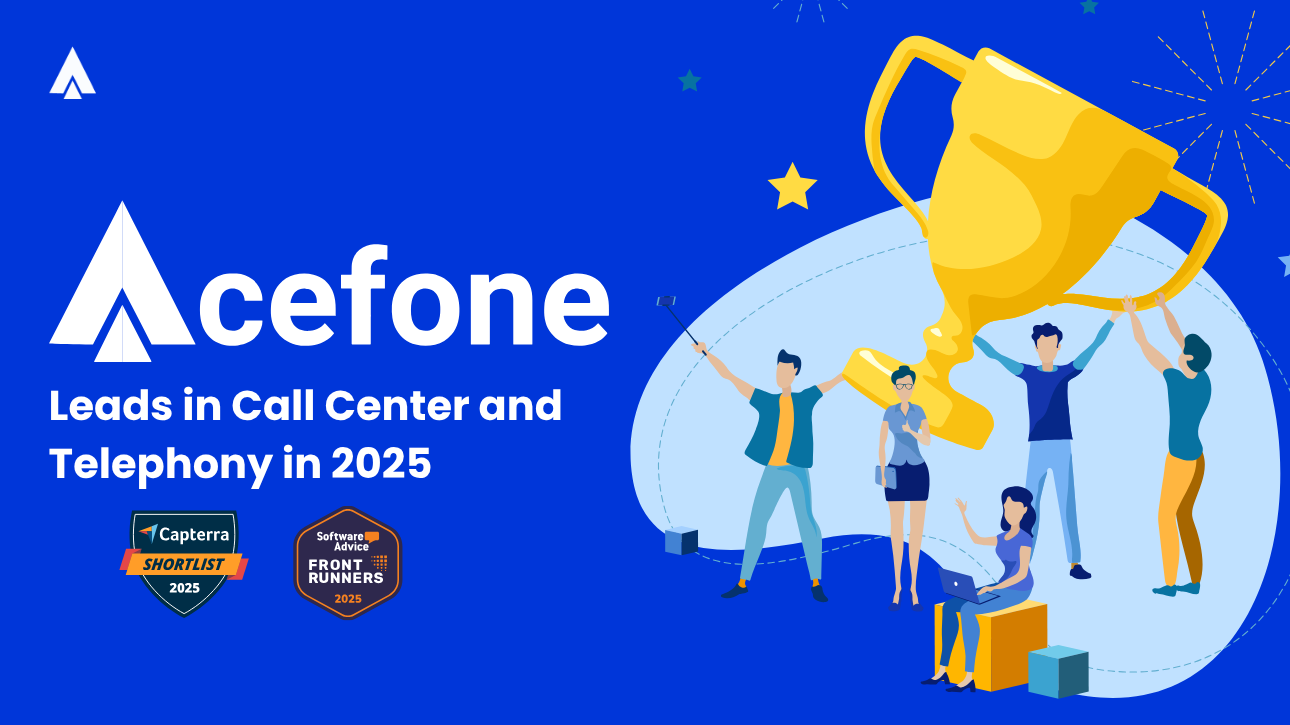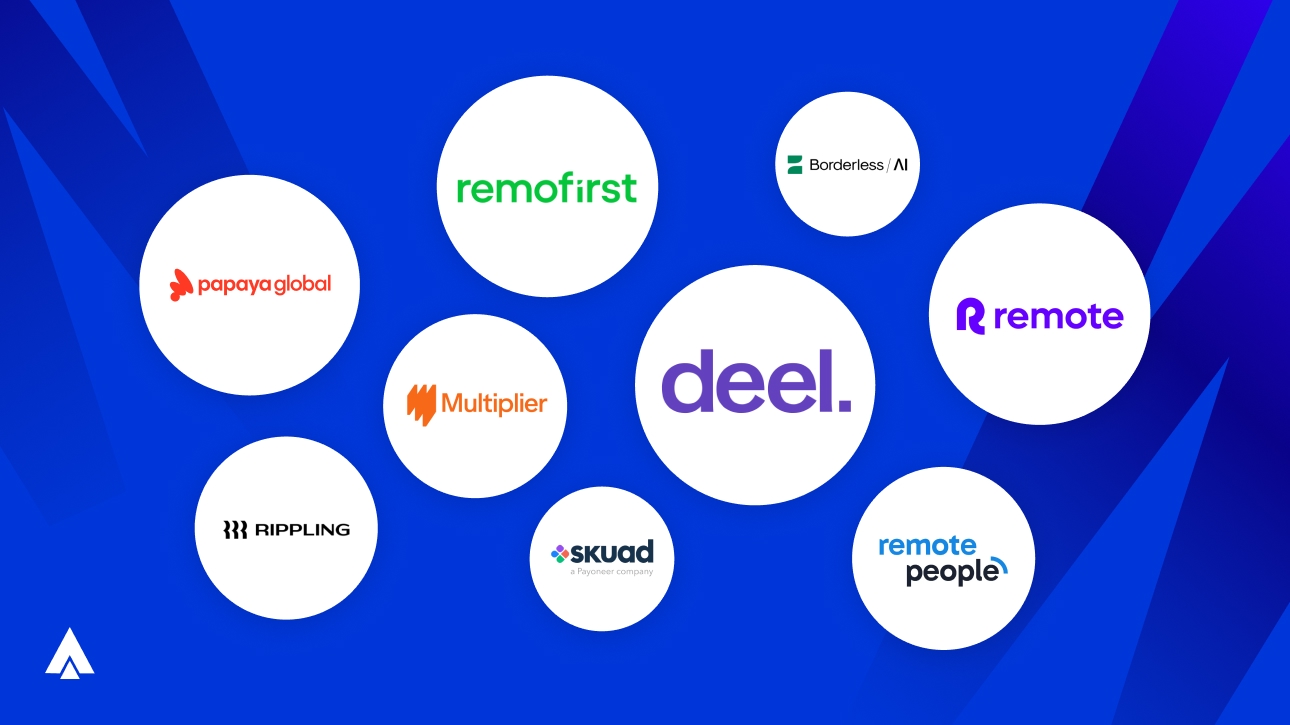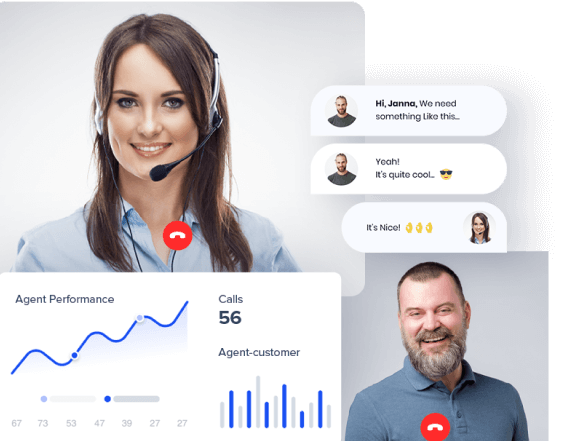Here’s a reality check about customer experience that might surprise you: while most businesses are still juggling disconnected customer service channels, the industry leaders have already moved to something far more sophisticated.
They’re not just managing customer interactions, they’re orchestrating them.
The Customer Experience as a Service (CXaaS) market is projected to grow from USD 12.65 billion in 2025 to USD 26.11 billion by 2034. There’s a compelling reason behind this explosive growth. Forward-thinking leaders are discovering that CXaaS isn’t just another tech buzzword. It’s their competitive weapon for transforming fragmented touchpoints into seamless, revenue-driving customer journeys.
But what exactly is CXaaS, and why should it matter to you?
Let’s understand.
The Customer Experience Crisis
Picture this scenario: A customer calls your bank at 2 AM with an urgent transaction issue. They get transferred three times, explain their problem repeatedly, then get asked to email documents. The next day, they follow up via chat, only to start the entire process over again.
Sounds familiar? You’re not alone.
Most businesses today operate what we call “channel silos.” They have separate systems to manage calls, email, chat, and messaging apps, such as WhatsApp. Each channel operates independently, creating a fragmented nightmare for customers.
The US Context: Digital Expectations Are Skyrocketing
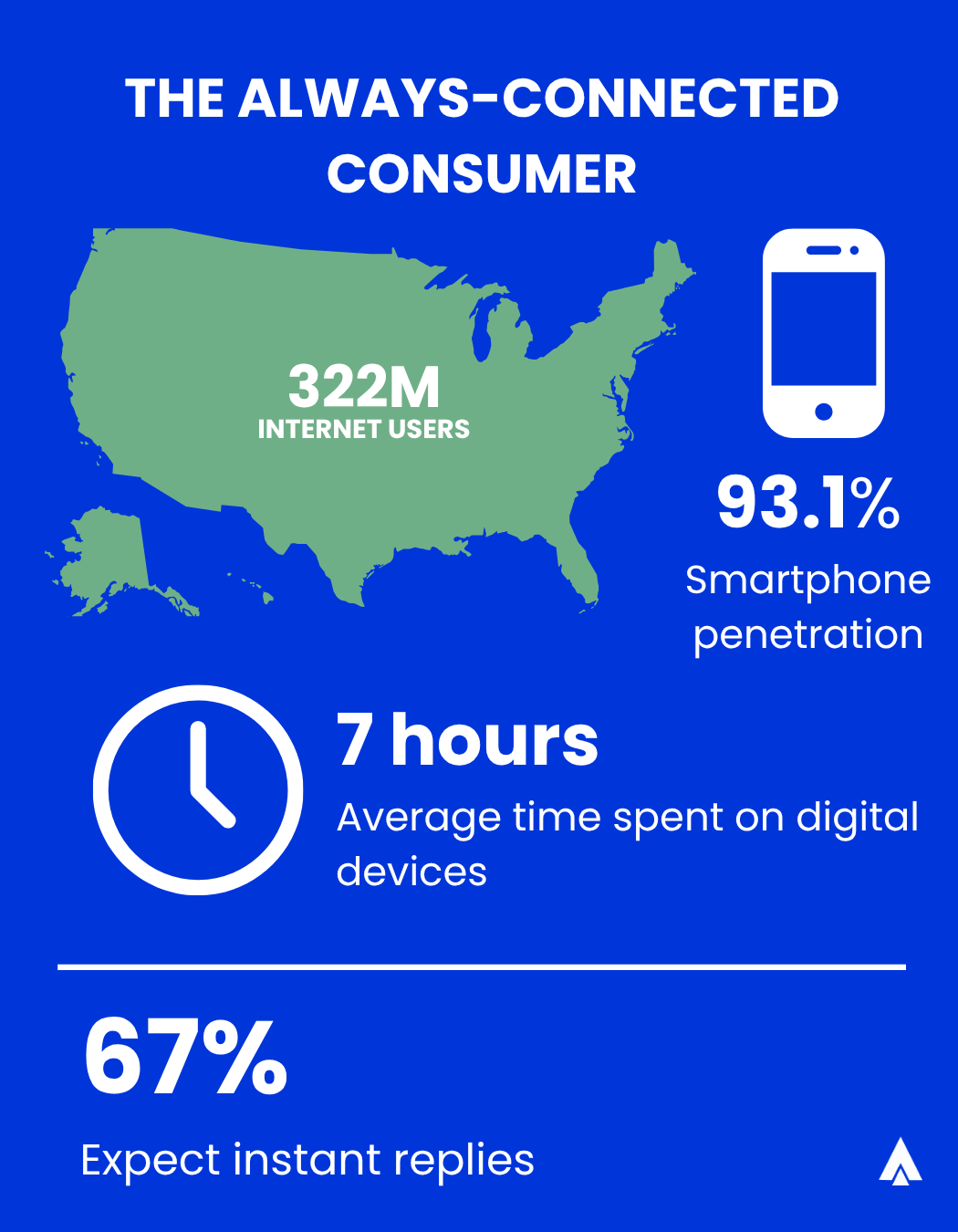
The US market consists of 322 million internet users with 93.1% smartphone penetration. This means that, the average American customers spend 7 hours daily on digital devices, with 67% expecting instant responses to customer service inquiries.
This creates unique challenges such as:
- Privacy regulations surrounding customer data including CIRCIA and some state-level laws like CPRA along with other emerging federal requirements
- Omnichannel sophistication with high integration expectations across all touchpoints
- Premium experience demands with at least a three-nines uptime system and zero tolerance for delays or friction
- Enterprise-grade security requirements for data protection and compliance
- Real-time expectations where 90% of customers expect immediate responses
What is CXaaS?
So, what exactly is Customer Experience as a Service (CXaaS)?
Think of CXaaS as your customer experience orchestra conductor. Instead of having separate musicians (channels) playing different songs, CXaaS ensures every touchpoint plays in perfect harmony.
It operates through a cloud-based platform that unifies all customer communication channels into a single, intelligent system. Th main aim is to provide consistent, personalized experiences across every interaction.
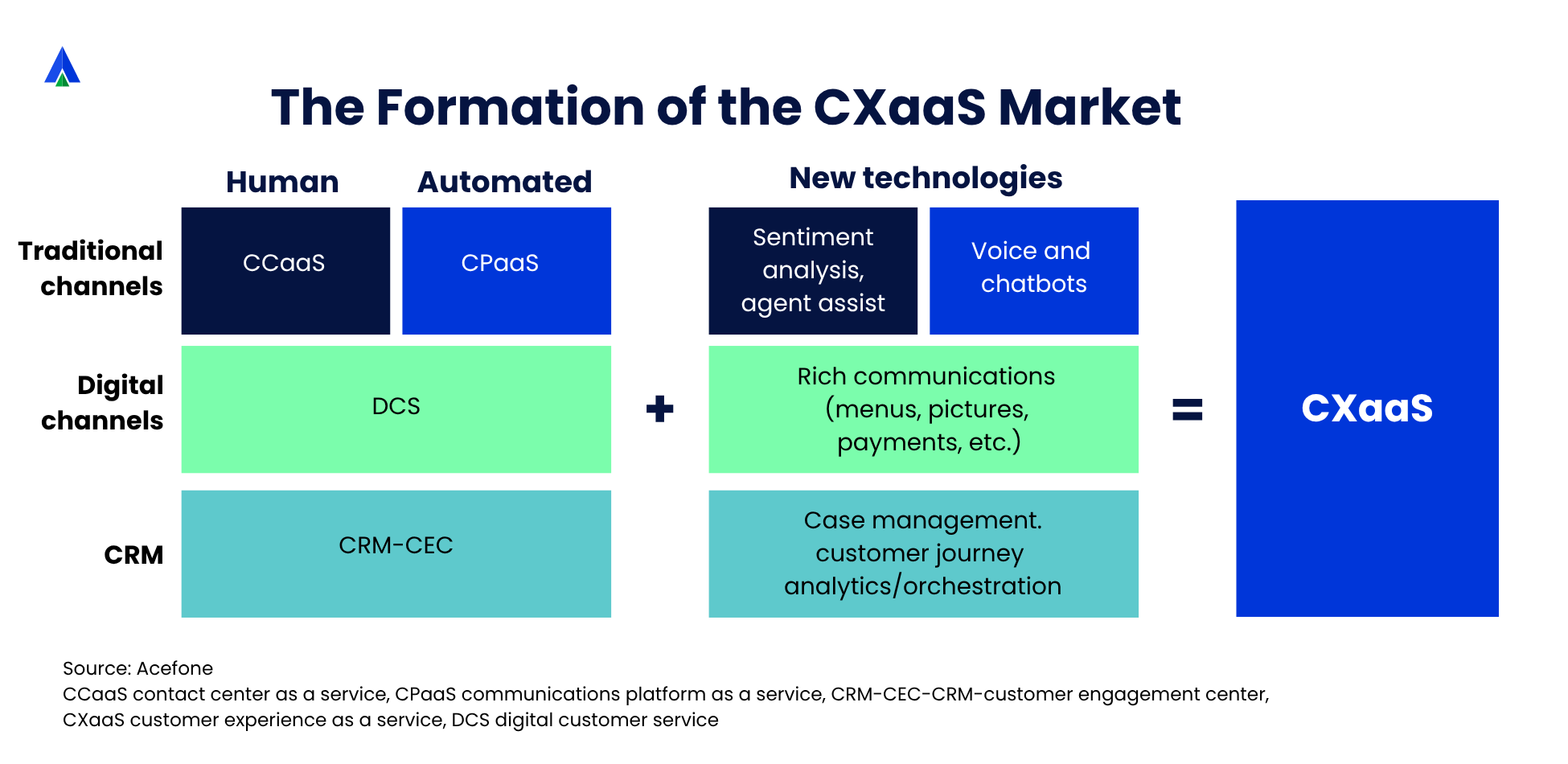
The Four Pillars of CXaaS
Here’s a breakdown of the main components of customer experience as a service:
1. Omnichannel Orchestration
Think about how frustrating it is when you start a conversation on chat, then call customer service, only to have to explain everything all over again. That’s exactly what omnichannel contact center software solves. It creates smooth transitions between voice, video, chat, and messaging so customers can interact with agents on multiple channels without losing context.
Each caller profile travels with you across every touchpoint. This way, the context of your conversation is preserved no matter which channel you are jumping to. No more repeating yourself or starting from scratch.
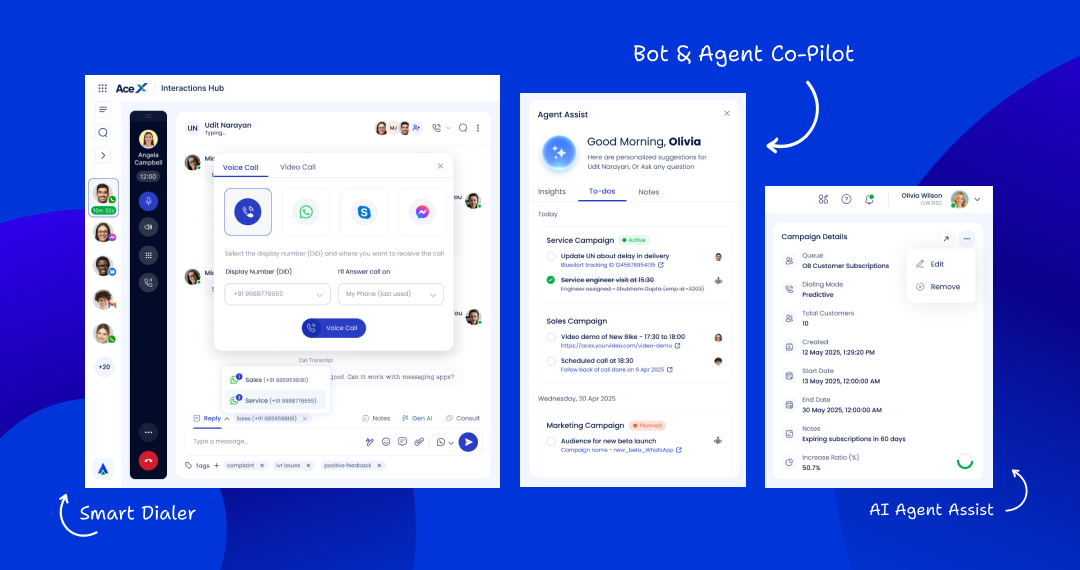
2. AI-Powered Intelligence
Unlike human agents, AI doesn’t just wait for customers to dictate what they need. Instead, it actually anticipates their needs before they even ask. It’s like having a customer service rep who can read minds.
AI-powered customer experience systems analyze sentiment in real-time, picking up on whether someone is frustrated, confused, or just needs quick help. Then they route the customers to the right agent. This means no more getting bounced around in different departments or waiting in the wrong queue.
3. Cloud-Native Architecture
Here’s what makes modern platforms so reliable: they’re built for the cloud from the ground up. Whether it’s Black Friday sale or a sudden surge in support requests, the cloud contact center system automatically scales up to handle the load without breaking a sweat.
You can reach a global audience while still following the necessary rules and regulations. Plus, everything connects easily with your existing systems through APIs, so you’re not starting from scratch or dealing with compatibility nightmares.
If you want to learn more, reach us at Virtual Call Center solutions
4. Advanced Analytics & Insights
You know how you wish you could see exactly what’s happening in your customer service operation at any moment? That’s what real-time dashboards give you – a clear view of everything that’s going on right now. But it goes deeper than just current stats. You can map out the entire customer journey to see where agents are getting stuck or having great experiences. Beyond that, you also get predictive analytics that help you spot problems before they happen, so you can fix things proactively instead of always playing catch-up.
CXaaS vs. Traditional Customer Service
According to a Gartner report, 80% of all customer interactions take place through AI-powered communication channels. This shift marks a fundamental transformation, not just in tools, but in the entire customer experience strategy.
While traditional customer service often struggles with fragmented systems and slow, reactive responses, Customer Experience as a Service (CXaaS) differs. It offers an integrated, intelligent, and scalable model suitable for today’s world.
Here is a breakdown of how the two approaches differ:
| Traditional Customer Service | CXaaS (Customer Experience as a Service) |
| Channel silos | Unified communication across voice, video, chat, and email |
| Reactive support after problems arise | Proactive engagement based on predictive analytics |
| Manual processes and human dependency | AI-powered automation and self-service options |
| Limited visibility into customer behavior | Comprehensive, real-time analytics dashboards |
| High operational costs due to inefficiencies | Optimized resource use with intelligent routing |
| One-size-fits-all interactions | Personalized experiences based on customer data |
| Inconsistent service across channels | Consistent omnichannel presence with seamless transitions |
The CXaaS Implementation Playbook
Now that you understand the unified CXaaS model in detail, let’s explore how to successfully implement it within your organization.
This playbook outlines a structured 90-day rollout plan divided into three key phases: Foundation, Implementation, and Optimization. Each phase builds upon the previous one, ensuring a smooth transition and measurable outcomes.
Critical Success Factors for CXaaS Implementation
Your CXaaS transformation will only succeed if you build it on a strong strategic foundation. Here are a few critical factors you need to consider for successful implementation.
- Executive Sponsorship
Transformation starts at the top. Having C-level support will ensure faster decision-making, budget approvals, and cultural momentum.
- Data Quality
High-quality, unified data is foundational to any customer experience system. Invest in cleansing and normalizing your datasets before going live.
- Change Management
Prepare teams for new tools and workflows. Communicate benefits clearly, offer training, and celebrate quick wins.
- Gradual Rollout
Don’t attempt a massive switch overnight. Pilot first, measure results, learn from them, and expand in phases.
Common Implementation Errors to Avoid
Even the most promising CXaaS transformation can go off track without the right precautions. Here are some common pitfalls you need to actively avoid, during implementation:
- Big Bang Approach – Trying to transform everything at once can cause chaos. Phase your rollout.
- Neglecting Training – Teams need guidance to adopt new systems. Don’t assume “they’ll figure it out.”
- Ignoring Integration – Poorly integrated systems lead to fragmented data and broken experiences.
- Overlooking Mobile – A mobile-first design is essential in today’s customer landscape.
- Skipping Analytics – Without measurement, you won’t know what is working or failing.
The Future of CXaaS
CXaaS platforms have already made a big difference in how businesses connect with customers. But the real game-changer is what’s coming next. New tech and evolving business models are set to shake things up even more.
What can you expect to see in the customer service experience market? Let’s take a look at them.
- Generative AI Integration
Generative AI enables more natural, contextual conversations that feel genuinely human, while simultaneously generating personalized content. So far, its impact has been significant – with the global Gen AI market projected to reach $967.65 billion by 2032.
The technology’s ability to understand context, generate relevant responses, and learn from each interaction creates a more engaging customer experience. You can also provide 24/7 support that doesn’t feel robotic or scripted. AI systems today are capable of handling complex queries while maintaining the natural conversational flow customers expect from human agents.
- Edge Computing
Edge computing is a technology that processes data closer to the source, near the user or device, instead of relying on a centralized cloud. Moving computational power closer to the end user slashes latency to under 5 milliseconds, compared to the 20-40 milliseconds typical of cloud computing, creating a noticeable improvement in user experience.
The technology also enhances data privacy and security by processing sensitive customer information locally rather than transmitting it to distant cloud servers. By the end of 2025, 75% of data is expected to be created outside central data centers. This makes edge computing essential for delivering responsive customer experiences while keeping customer data secure.
- Outcome-Based Pricing
The traditional model of paying for software features is giving way to outcome-based pricing, where you pay for measurable results rather than capabilities. That means success metrics drive the cost, making the whole setup more transparent and keeping both providers and clients more accountable.
This pricing model encourages continuous optimization and innovation, as providers must consistently deliver measurable improvements to justify their fees. You get predictable costs tied to performance, and they stay focused on creating solutions that actually move the needle around your customer experience.
- Industry-Specific Solutions
The one-size-fits-all approach to customer experience platforms is evolving into industry-specific solutions designed for particular sectors. Healthcare organizations require different compliance and privacy features than financial services companies, while retail businesses need different integration capabilities than manufacturing firms.
Think about the healthcare sector for a moment. A major U.S.-based healthcare provider needs more than just a standard CX platform. They need something that is truly tailored to medical procedures. That means staying HIPAA compliant, protecting sensitive patient data, and working with workflows that make sense for hospitals and clinics.
Now imagine if they had a CXaaS solution built just for that.
Instead of forcing a generic platform to work, a healthcare-specific solution could come with:
- Built-in Compliance: HIPAA-ready features and audit trails made for healthcare.
- Tailored Workflows: Pre-set processes for things like patient scheduling, medical records, and provider communication.
- Relevant KPIs: Dashboards that track what really matters, like patient satisfaction scores and appointment efficiency.
- Enterprise Grade Security: The kind of protection you need to handle Protected Health Information (PHI).
With the right setup, this kind of platform could boost visibility, help employees work smarter, cut costs, and improve regulatory compliances and patient experience. And let’s be honest, that’s hard to pull off with a generic, cookie-cutter system.
This just goes to show how much more effective industry-specific CXaaS can be. When a platform understands your world, you’re not stuck trying to make it fit; it just works.
Ready to Transform Your Customer Experience?
The way we connect with customers is changing fast. It is no longer just limited to answering queries. It involves creating seamless, personal, and consistent experiences across every channel.
To do that, you need more than a few disconnected tools. You need a platform that brings everything together. That’s where a unified CXaaS solution comes in.
Acefone helps you do just that. Our platform ties all your channels into one smart system. You get real-time insights, smooth automation, and the flexibility to grow without missing a beat.
